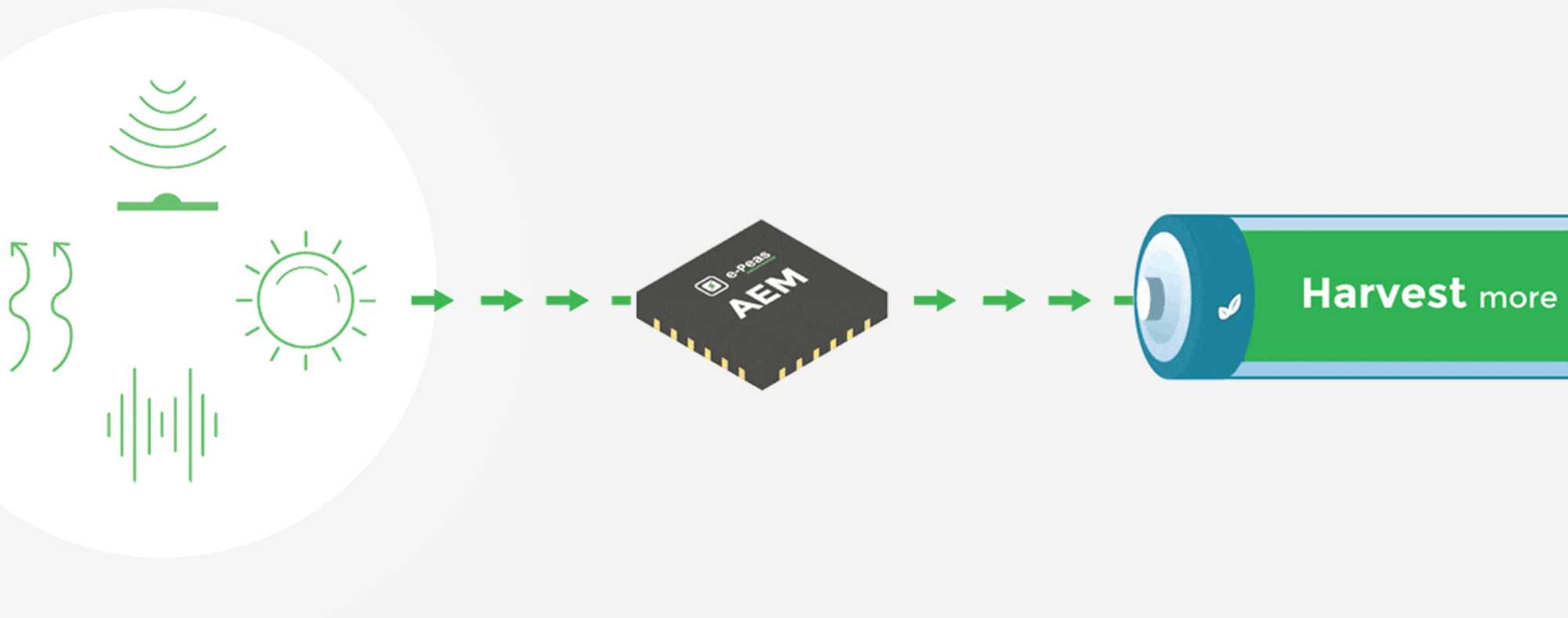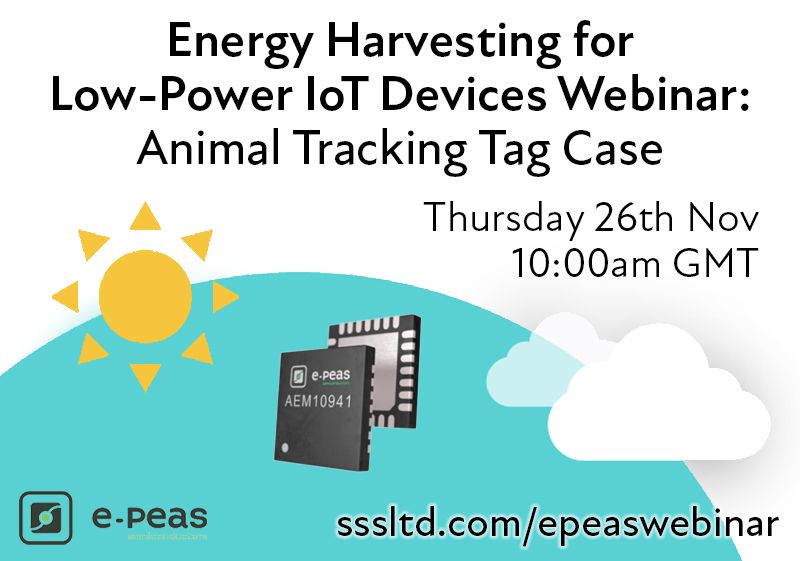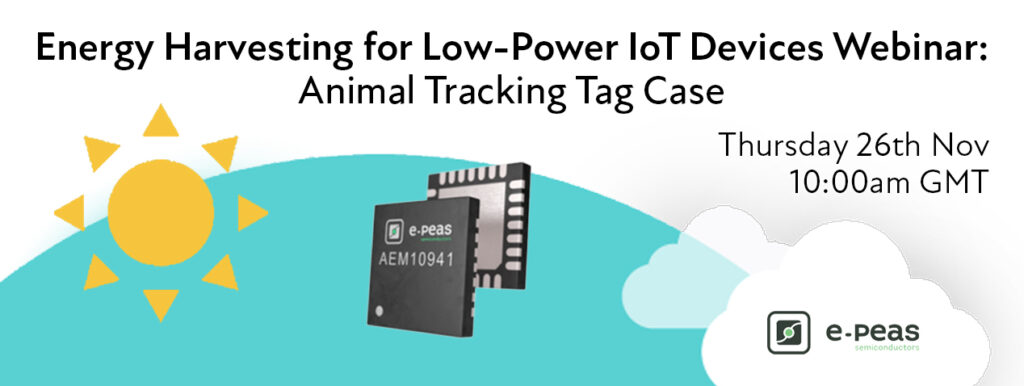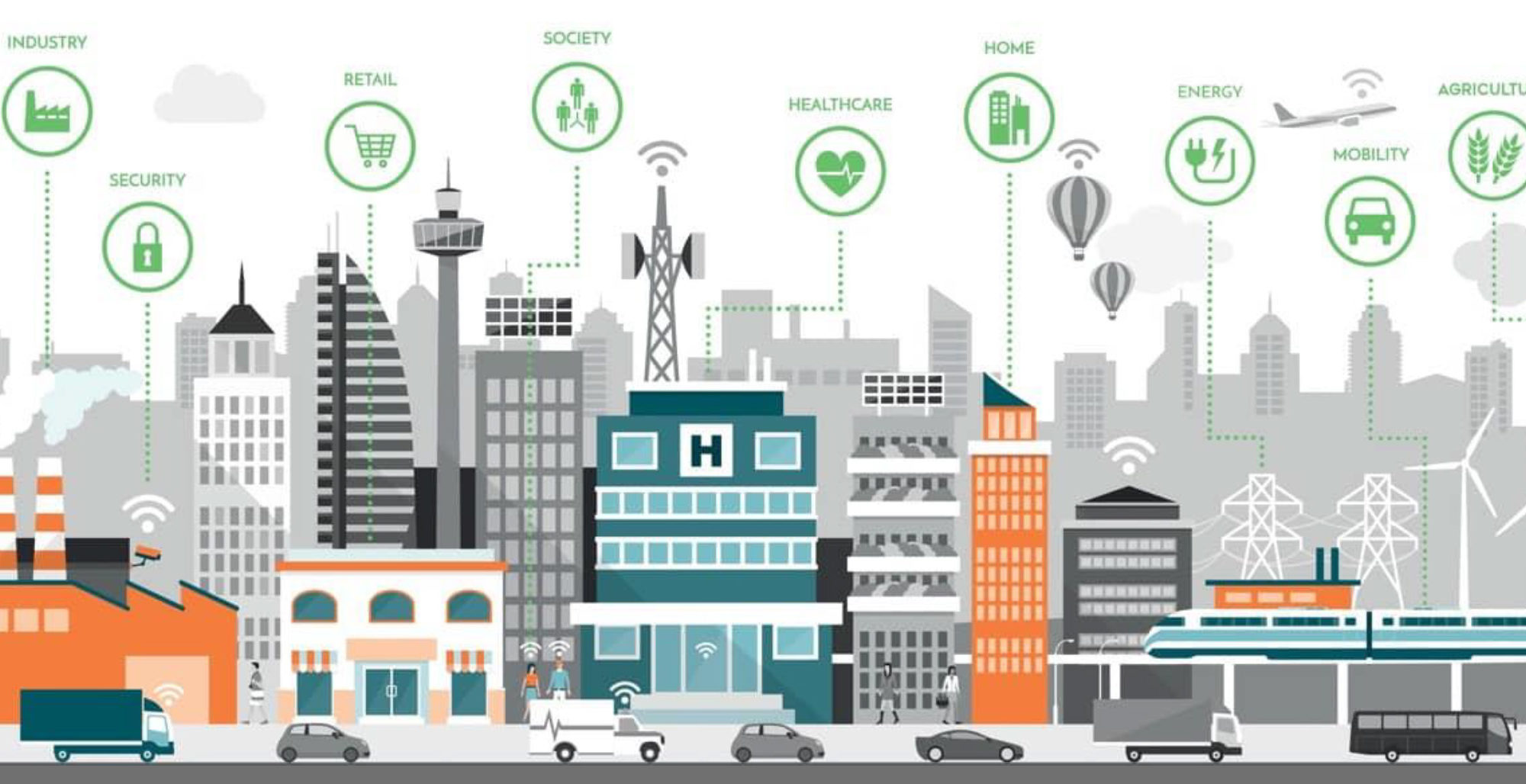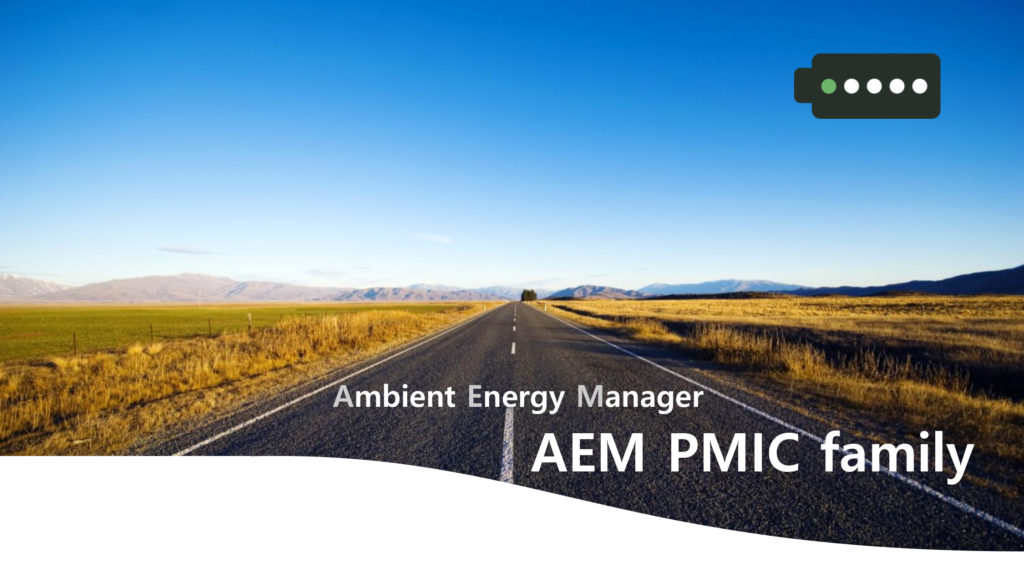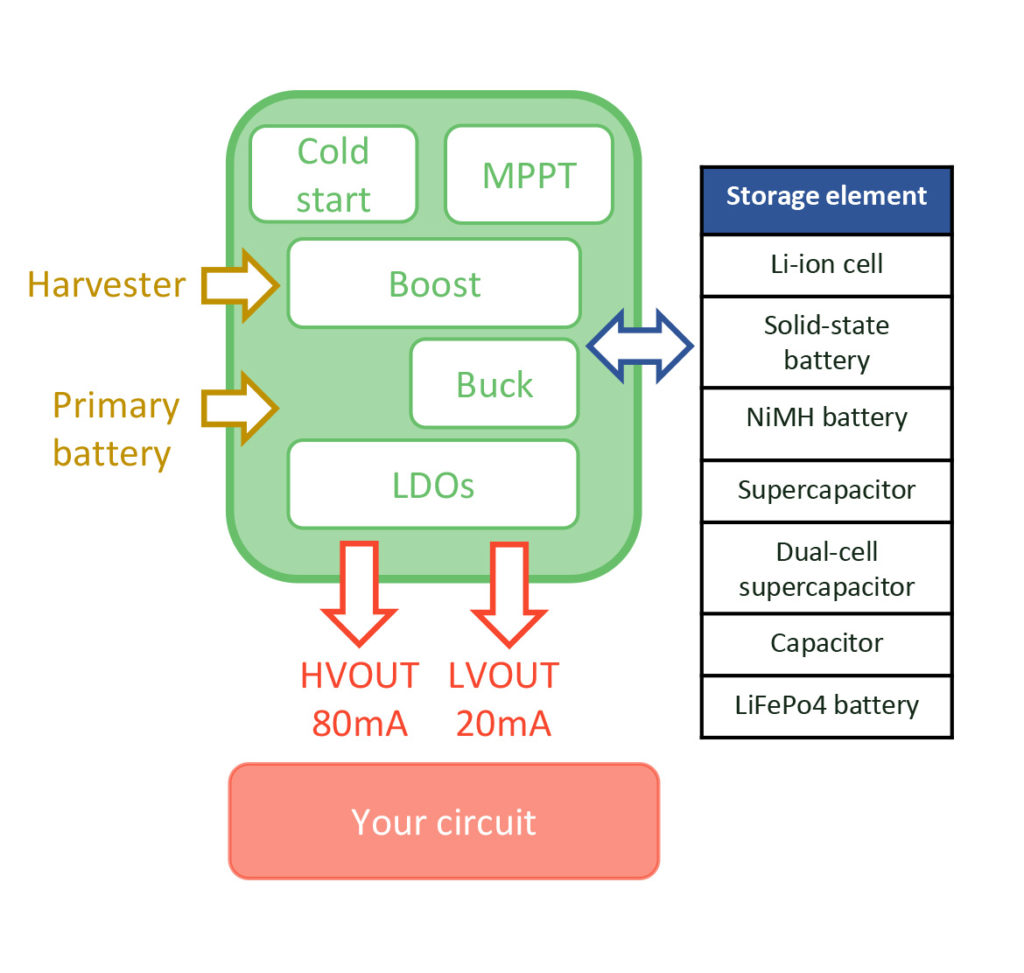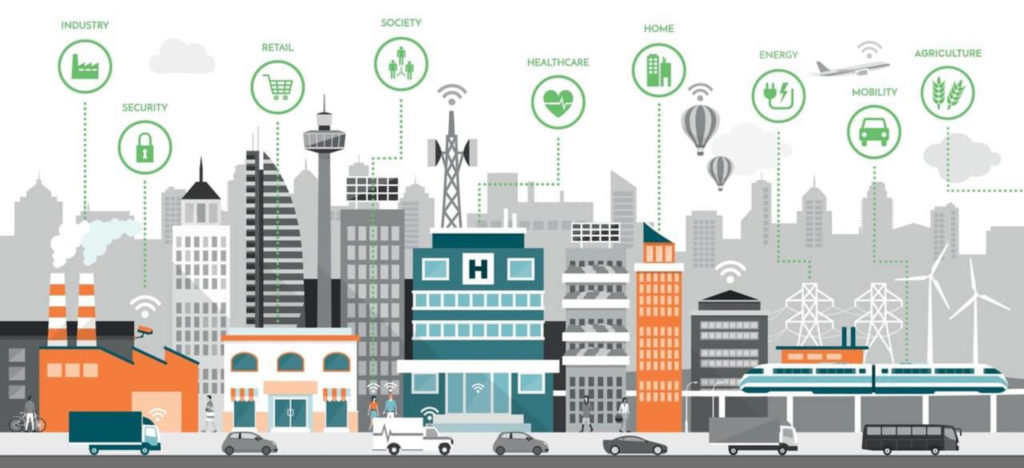On Thursday 28th January at 09:30am GMT, Solid State Supplies, in conjunction with e-peas, will be holding a seminar to show how ‘Energy Harvesting’ can benefit the customer and the environment in the reduction of batteries: the Powering Embedded Wireless Solutions with Energy Harvesting free virtual workshop.

What is Energy Harvesting in IoT?
Many consumers and industries developing IoT devices face the challenge of having to evaluate the pros and cons of either using batteries or to plug-in their devices for power. Although batteries are much more convenient choice than plug-in charging, batteries can pose issues of time and cost when they need replacing in the field; this is where Energy Harvesting technologies are an effective solution.
Energy harvesting used in IoT devices means that devices can be recharged by ambient sources that surround them. e-peas Ambient Energy Manager (AEM) PMIC Family is an integrated energy management circuit that extracts DC or AC power from different types of ambient energy harvesters to simultaneously store energy in a rechargeable element and supply your system with two independent regulated voltages.

Ambient energy sources:
Photovoltaic (Indoor and Outdoor Sources)
Thermal
Vibration (Constant Frequency Mechanical)
Radio Frequency (Very Low Power)
What you will learn
- How Energy Harvesting can potentially remove batteries from designs
- Reduce expensive field maintenance
- Give batteries longer life
- Help reduce global waste
- The design of greener products; UK designers can access the inovate fund
Click Here to Register for Free
Image source: e-peas

